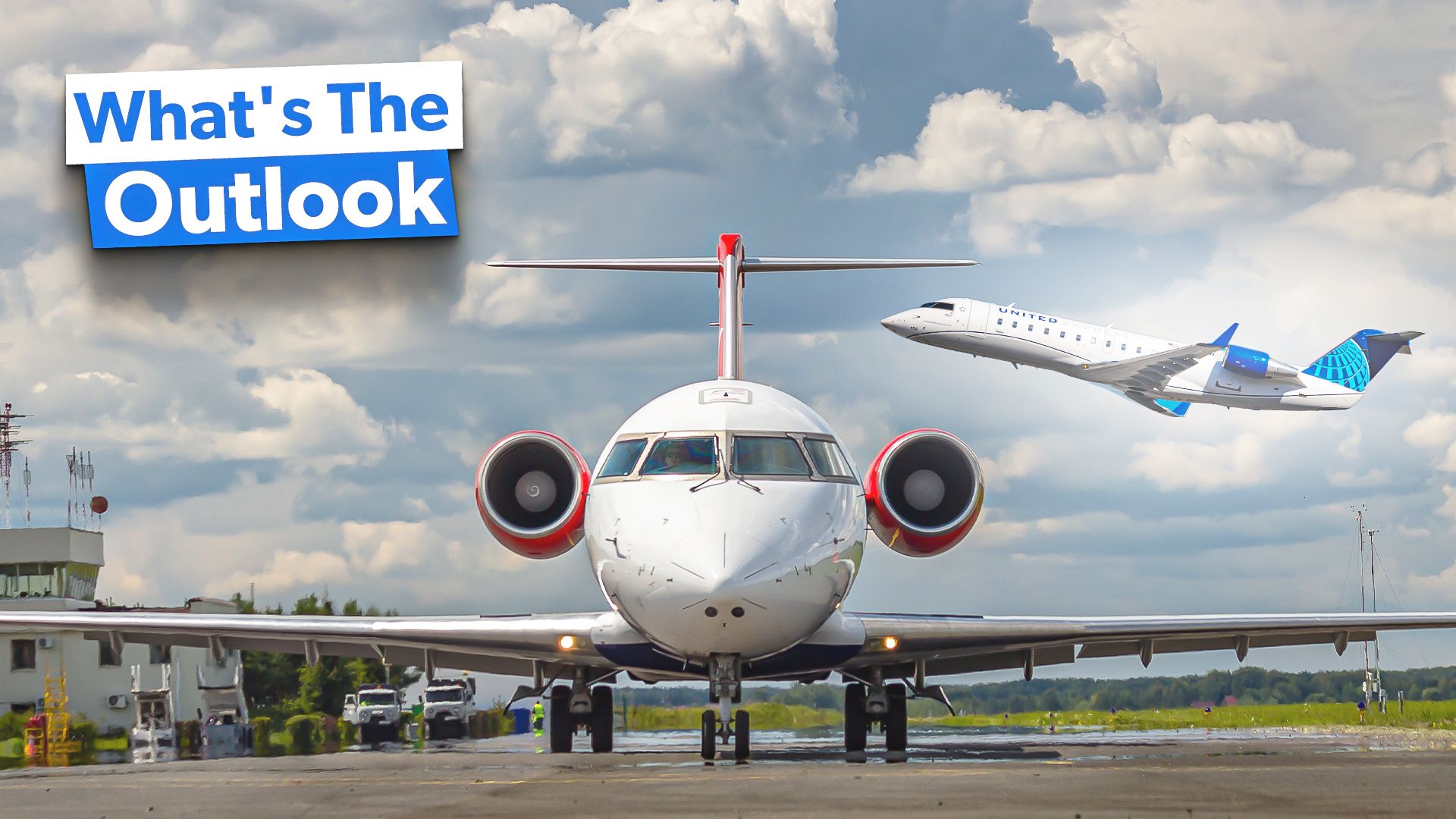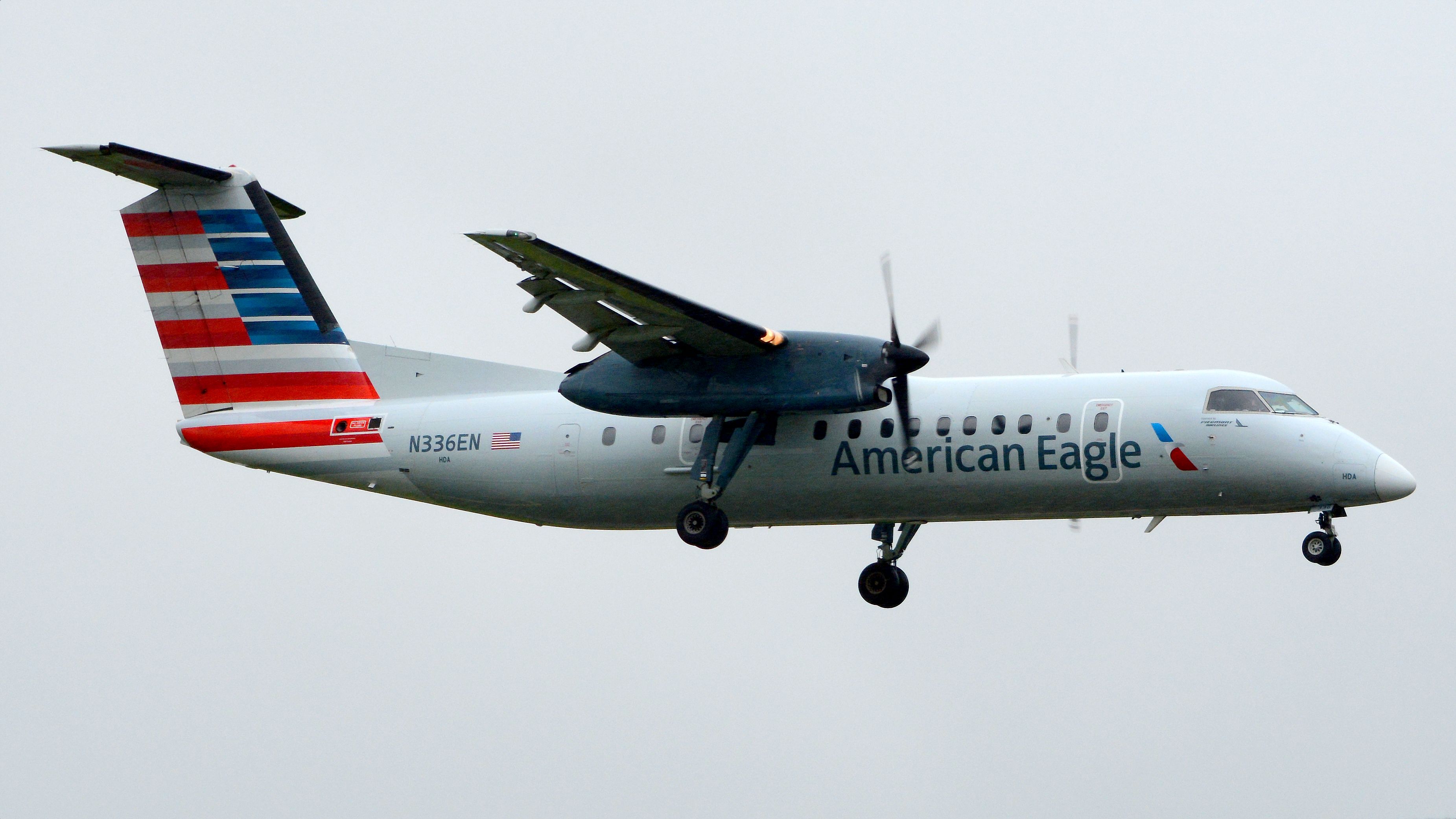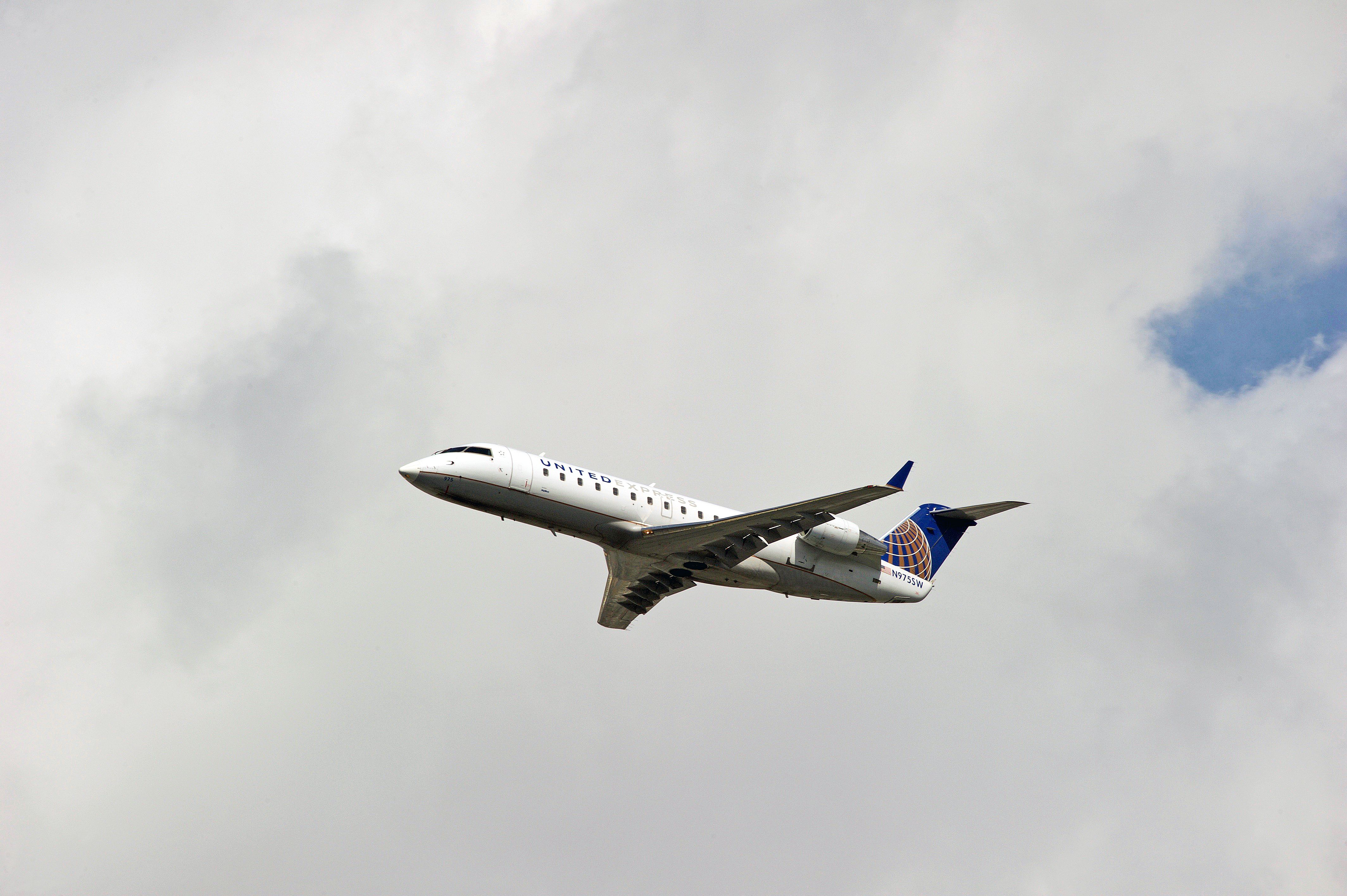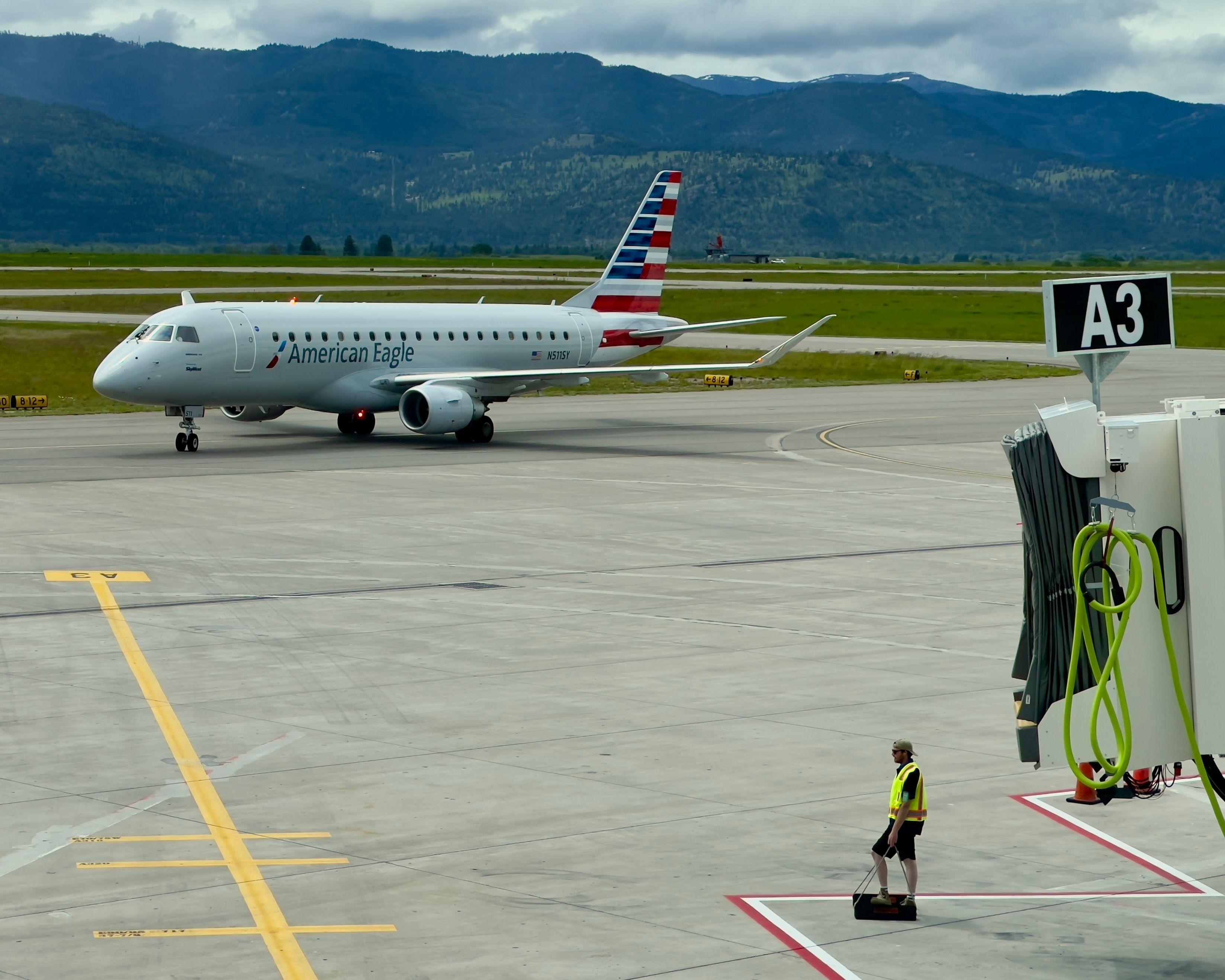Summary
- Regional aircraft under 50 seats are facing retirement, risking billions in annual revenue for major US airlines.
- Larger jets are now being used to fill the gap, with increased capacity but potential limitations on frequencies and feed.
- While switching to 76-seater jets may reduce services, United Airlines’ CRJ550 modification offers a premium alternative.
Smaller regional aircraft accommodating 50 passengers or less have been a staple in US aviation for decades. Given that the country has several regional markets outside of major cities, carriers such as SkyWest Airlines have a robust operation with contracts with all three legacy contenders: American Airlines, Delta Air Lines, and United Airlines. The most popular version of this aircraft is the Bombardier CRJ200, but others have been made, such as the Embraer ERJ series and the original variants of the De Havilland Dash 8 family. However, over the years, these small workhorses have become increasingly rare.
Due to government regulations, airlines are required to fly to a handful of small cities – Essential Air Service (EAS). As such, mainline aircraft do not fit appropriately, given the size of the town or its literal physical limitations. For years, carriers have used regional aircraft of the right size, but as the industry has changed, regional planes’ capacity has also evolved. While the majority of these so-called regional aircraft now have a capacity of around 70 or more passengers.
Several hundred 50-seater aircraft operated over the years
With slightly larger jets, some airlines are being creative to attend to the gap – which is the requirement of smaller jets serving smaller markets. In the current state of the aviation world, 50-seater aircraft are aging and facing an immediate risk of retirement, according to Wingspan. The COVID-19 pandemic may have shortened their lifespan, but nonetheless, manufacturers have not worked on developing a replacement aircraft of the same size. As the jets become more phased out, it is estimated that the American, Delta, and United could lose $1 billion in annual revenue.
Before the pandemic, the legacy airlines collectively operated a fleet of nearly 700 regional jets with a capacity of 50 seats or less. Since Bombardier and Embraer ended production of these jets years ago, the only aircraft of the same size currently produced is the ATR42. However, that aircraft is a turboprop and does not appear to be a desired solution for any of the three airlines.
Feasible turboprop operations?
US Airways was one of the leading operators of the Dash 8-100, -200, and slightly larger -300. These aircraft were also turboprops and had a capacity of around 37 to 56 passengers. Under a partnership with regional carrier Piedmont Airlines, the carrier primarily flew them from its hub at Philadelphia International Airport (PHL) under the US Airways Express brand. America West Airlines’ regional brand, America West Express, also operated the Dash 8-200/-300 primarily from its hub at Phoenix Sky Harbor International Airport (PHX), thanks to a contract with Mesa Airlines.
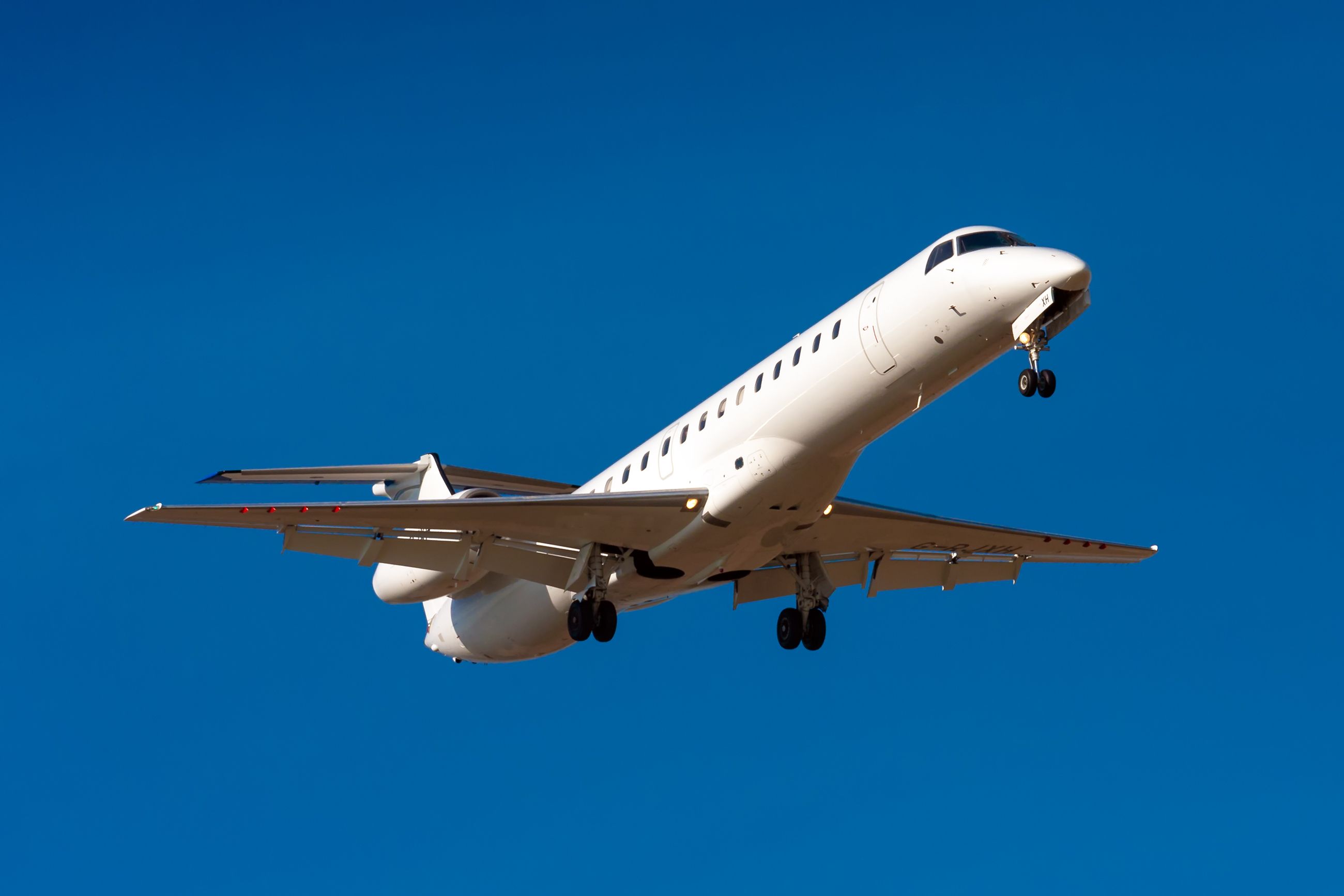
Read More
The Battle Of The Regional Aircraft – Which Aircraft Is Best?
How do the various different regional aircarft compare?
When America West subsequently merged with US Airways in 2007, US Airways had fleets of Dash 8s on both coasts. Mesa Airlines eventually retired the aircraft and focused on operating the larger CRJ-900, leading to their disappearance at PHX.
Photo: Catharine Pierce | Shutterstock
However, when US Airways merged with American Airlines, Piedmont continued to operate its Dash 8 fleet under the American Eagle brand until they were retired in 2018. The airline now only operates an exclusive fleet of 50-seater aircraft, which is the ERJ145.
A major part of the revenue
SkyWest, one of the largest regional airlines, operated the CRJ200 for all three legacy carriers. Currently, the airline primarily utilizes the jet with United – under the United Express brand – primarily out of Chicago O’Hare International Airport (ORD) and Denver International Airport (DEN). SkyWest also has a select fleet of CRJ200s used for charter operations. Interestingly, the carrier retired the jets from operating under Delta’s regional brand, Delta Connection, last year. However, given the capacity gap and EAS regulations, the airline will allocate some aircraft to operate select Delta routes, according to AirlineGeeks. Another small regional airline, Air Wisconsin, has an exclusive fleet of CRJ200s. The airline operates them under the American Eagle brand, primarily out of ORD.
Photo: Philip Pilosian | Shutterstock
While some may think the death of these 50-seater aircraft can mainly be attributed to revenue generation, it appears to be quite the opposite. According to Wingspan, regional aviation is often misjudged regarding its potential to make money. The revenue linked to the specific flight flown by a regional aircraft is just a small, noticeable portion of a substantial feed that essentially supports an airline’s entire network. When observing the upstream revenue generated by the feed, no less than 30% of the income of the big three airlines is reportedly dependent on regional aircraft operations – Meaning a death of the 50-seater market is simply unrealistic and would result in a loss of millions of dollars.
|
50-Seater Operations Revenue Statistics |
|||
|---|---|---|---|
|
American Eagle |
Delta Connection |
United Airlines |
|
|
Departure Revenue |
36% |
26% |
31% |
Adapting to the situation
Although it is clear that the market will not be going anywhere, airlines are still supporting it, but just with larger aircraft. The E175, which is undoubtedly the most popular regional jet today, accommodates 76 passengers. With all three legacy carriers operating the aircraft, it has been a significant component of the regional market. While it may seem like a simple solution and replacement for 50-seater aircraft, there are some limitations. According to Wingspan, switching to 76-seater operations will lead to reduced frequencies and feed degradation.
- Delta is estimated to lose two percent of its feed revenue
- American is estimated to lose four percent
- United will suffer more, at five percent of its feed revenue
Photo: vesperstock | Shutterstock
This, in addition to scope clause agreements, would explain why United was the first to develop the CRJ550 in 2019. The aircraft is a modified version of the CRJ700, with a focus on premium features. It accommodates 50 passengers, down from the CRJ700s capacity of up to 78. Delta recently announced that it would follow through, with SkyWest converting some of its CRJ700s to CRJ550s.
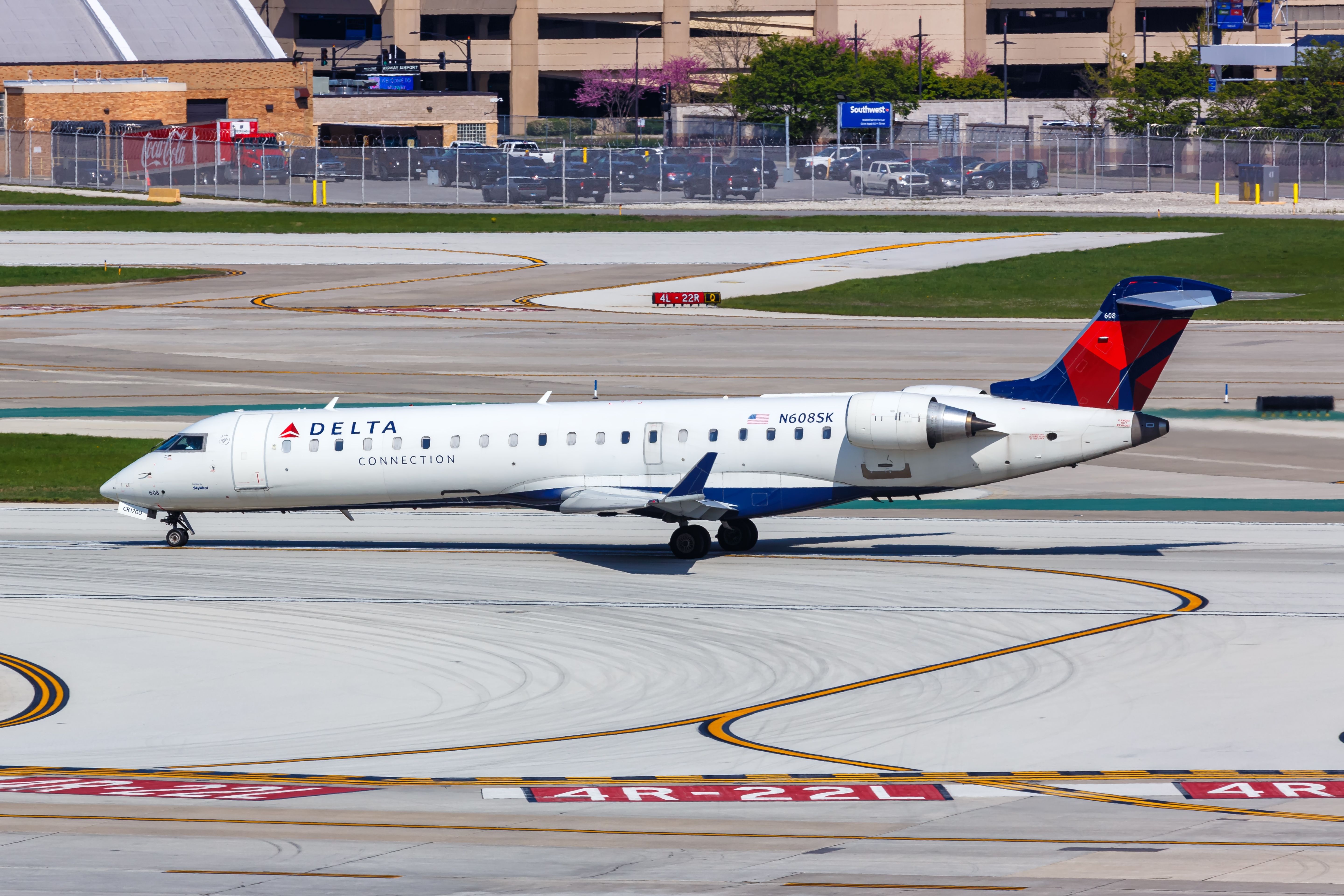
Read Next
SkyWest Airlines To Operate 19 Bombardier CRJ550s For Delta Air Lines
The unique aircraft modification was first pioneered by United Airlines in 2019.

